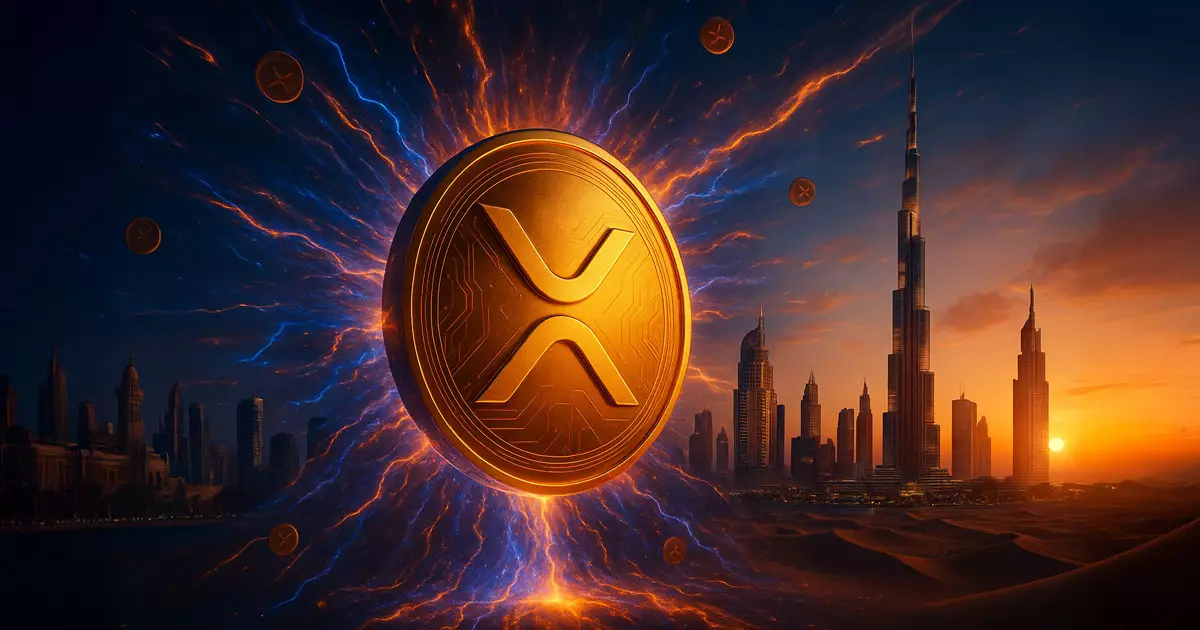Ripple’s stablecoin, RLUSD, recently unveiled remarkable growth by expanding its circulating supply by a staggering 29%, reaching a notable $320.6 million as of June 8. This leap is not merely a statistic; it signifies a critical moment for Ripple and the broader cryptocurrency sector. Having crossed the $300 million mark for the first time, this sixfold increase since its inception in December 2024 demonstrates a remarkable trajectory that could redefine financial transactions in the digital era.
The implications are profound. As a system that embodies stability and reliability in a notoriously volatile market, RLUSD appears to be carving out a significant niche. The correlated rise in weekly transfer volumes—jumping 38% to $648.1 million—reaffirms that the demand is there, and users are beginning to recognize the potential that RLUSD holds. Yet, despite this optimistic outlook, we must remain vigilant about its still-modest market share of approximately 0.1% within the $236 billion stablecoin ecosystem.
Competitive Landscape and Challenges Ahead
Despite Ripple’s impressive momentum, the stablecoin market is dominated by established players like USDT and USDC. These tokens have solidified their positions due to extensive liquidity and adoption across exchanges. Ripple’s RLUSD may enjoy a fresh wind but faces the uphill challenge of altering consumer perceptions about digital assets.
Moreover, the fact that RLUSD is backed by short-term Treasuries and cash in regulated accounts is indeed confidence-inspiring, but it leads one to ponder: can it sustain this tempo? With TLUSD and USDC growing at steady rates while smaller players like PYUSD show single-digit advances, the need for differentiation becomes all the more urgent for Ripple.
Strategic Partnerships as Catalysts
Ripple is not just resting on its laurels; it is taking significant strides to position RLUSD within the ever-evolving financial ecosystem. The recent endorsement by the Dubai Financial Services Authority (DFSA) is a pivotal development, granting RLUSD a level of credibility many emerging tokens yearn for. By integrating RLUSD into its DFSA-licensed payments platform, Ripple is preparing to enable about 7,000 regulated firms in the UAE to settle transactions using this stablecoin, exemplifying how regional geopolitical nuances can serve as fertile ground for financial innovation.
Furthermore, Ripple’s acquisition of Hidden Road, a prime brokerage platform, is poised to bolster RLUSD’s adoption. This $1.25 billion deal points toward a robust roadmap for integrating RLUSD into broader financial services, potentially transforming it from just a transactional tool into a collective cornerstone for digital asset management.
Future Prospects and Regulatory Dynamics
As RLUSD’s acceptance broadened thanks to international regulatory acknowledgment, a strong case emerges for why Ripple’s vision aligns intricately with the arc of financial digitization. The UAE’s progressive stance on digital economies, combined with rising demand for institutions seeking digital-asset solutions, suggests a ripe environment for Ripple’s endeavors.
However, while the initial indicators are positive, one must remain critical. The cryptocurrency market is notoriously fickle, and substantial reliance on regulatory bodies like the DFSA may introduce an element of risk that could span beyond Ripple’s control. Ripple’s aspirations will demand not just ambition, but also adaptability to varying regulatory landscapes, ensuring that RLUSD can sustain its competitive edge.
In a time marked by skepticism toward digital currencies, Ripple’s RLUSD might just have discovered the secret sauce required to flourish, but we must maintain a discerning eye as the narrative unfolds.


Leave a Reply